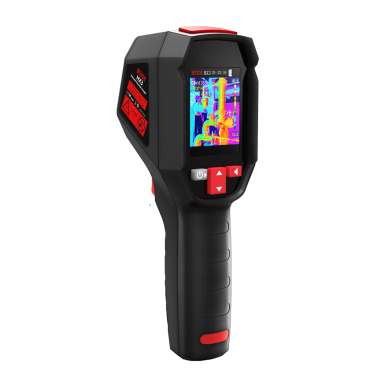
。
# Infrared Thermometer: A Non-Contact Temperature Measurement Tool
## Introduction to Infrared Thermometers
An infrared thermometer is a device that measures temperature from a distance by detecting the infrared energy emitted by objects. This non-contact method of temperature measurement has become increasingly popular in various industries and everyday applications.
## How Infrared Thermometers Work
Infrared thermometers operate on the principle that all objects emit infrared radiation as a function of their temperature. The device consists of:
– A lens to focus the infrared energy
– A detector that converts the energy into an electrical signal
– Electronics that process the signal and display the temperature reading
The thermometer measures the infrared radiation coming from the object’s surface and calculates the temperature based on the intensity of this radiation.
## Advantages of Non-Contact Temperature Measurement
Infrared thermometers offer several benefits over traditional contact thermometers:
– Quick temperature readings (often in seconds)
– Ability to measure moving or hard-to-reach objects
– Reduced risk of cross-contamination in medical settings
– Safe measurement of extremely hot or hazardous surfaces
– No need to interrupt processes for temperature measurement
## Common Applications
Infrared thermometers are used in numerous fields:
### Medical Use
– Fever screening (especially during pandemics)
– Body temperature measurement in hospitals and clinics
### Industrial Applications
– Monitoring equipment temperature in manufacturing
– Electrical system maintenance
– HVAC system checks
### Food Safety
– Checking cooking and storage temperatures
– Monitoring food processing equipment
### Home Use
– Checking baby bottle temperatures
– Monitoring home appliances
– DIY projects requiring temperature measurements
## Choosing the Right Infrared Thermometer
When selecting an infrared thermometer, consider these factors:
– Temperature range needed for your applications
– Distance-to-spot ratio (how close you need to be for accurate readings)
– Emissivity settings (important for different surface types)
– Response time
– Additional features like data logging or alarms
## Proper Usage Tips
To get accurate readings with your infrared thermometer:
– Ensure the lens is clean and unobstructed
– Be aware of the distance-to-spot ratio
– Consider the emissivity of the surface you’re measuring
– Avoid measuring through glass or other transparent materials
– Account for environmental factors like steam or dust
## Limitations to Consider
While infrared thermometers are versatile, they have some limitations:
– They measure surface temperature only
– Accuracy can be affected by reflective surfaces
– Environmental conditions may influence readings
– They require proper calibration for critical measurements
## Future Developments
Infrared thermometer technology continues to evolve with:
– Improved accuracy and smaller size
– Integration with smart devices and IoT systems
Keyword: infrared thermometer
– Advanced features like thermal imaging capabilities
– Better algorithms for more reliable readings
## Conclusion
Infrared thermometers provide a convenient, safe, and efficient way to measure temperature without physical contact. Their versatility makes them valuable tools across numerous industries and applications. As technology advances, we can expect even more sophisticated and user-friendly infrared temperature measurement solutions to emerge.
